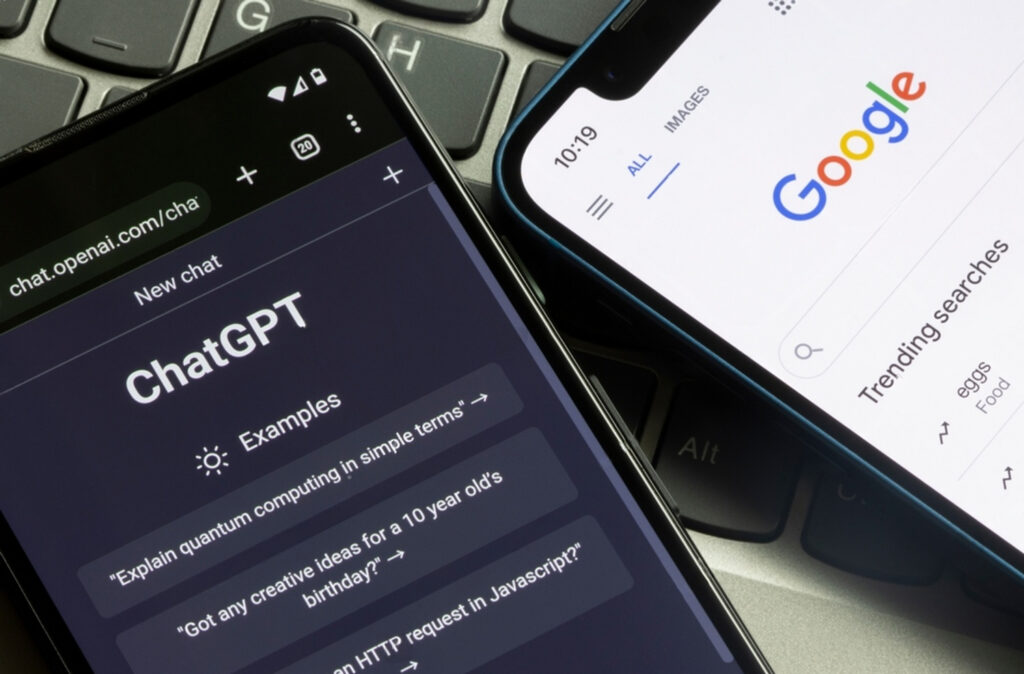In B2B SEO, the main goal is to attract high-intent searchers who can turn into qualified leads. However, not every high-intent visit results in sales-ready traffic, especially when dealing with long sales cycles or complex buying journeys.
As search evolves and the direct impact of keywords becomes less predictable, focusing on traffic quality is more important than ever. Quality has always been a key performance indicator (KPI), but now it needs a closer look. Simply understanding conversion rates and where a prospect sits in the funnel is not enough, we need to analyze intent and traffic behavior more carefully.
Many SEO teams fall into the trap of assuming that high intent always means immediate urgency. This often leads to frustration when impressions or clicks don’t translate into meaningful conversions. The real focus should be on building strategies that match visibility to different stages of the buyer journey while identifying the roles of decision-makers and influencers.
By applying expert tips on successful lead generation, this article explains seven practical strategies to align visibility with the sales funnel, better understand key stakeholders, and create content that builds trust and supports informed decisions before leads move to the sales team.
1. The Myth: “Bottom-of-funnel topics always drive ready-to-convert traffic”
While we often view our website, content, and analytics through the lens of customer journeys and conversion funnels, our audience rarely sees it the same way.
We like to believe user behavior follows a clear path, but in reality, many factors shape a person’s decision to convert, and most of them cannot be fully measured. Some users take action right away, while others return after days or even months before completing a step.
With new discovery methods such as AI-powered search, user behavior is becoming less predictable. What once felt like a simple path to conversion is now more complex. Some visits may not lead to action as expected, while others move forward faster than anticipated.
2. B2B Searchers Often Research and Compare Before Deciding to Buy
Beyond the challenges of intent and the different entry points visitors use, how and where someone converts can also depend on our approach.
Even our best-performing content can sometimes slow down the path to conversion. Just as we see quick, unexpected conversions from visitors who spend little time on the site, we also encounter the opposite where users engage deeply but take longer to act.
With search engines and large language models (LLMs) providing more answers upfront, much of the research process happens before a visitor even reaches our site.
This means that, even on pages designed for high-intent users, many visitors may still be in the research or comparison stage. They might be checking pricing details, if available, or building comparisons between us and competitors to guide their decision-making process.
If we make assumptions, limit navigation options, or restrict content paths, we risk losing their attention and reducing engagement. Balancing clear calls-to-action (CTAs) with helpful, detailed content allows visitors to choose their next step based on their intent during that session.
3. Identifying the Gap Between User Intent and Sales Readiness
I’ve already discussed intent, but what I haven’t addressed is how ready a visitor actually is to take the next step toward a sale.
Your brand story, content, and overall user experience can be strong enough to encourage a form submission or a phone call. However, if the visitor is not truly sales-ready, they may engage with your content multiple times, explore your offerings, and still stop short of converting.
This often leads us to believe there is an issue with the form, the call-to-action, or even the content itself. While those elements should always be reviewed, the real reason may be that the visitor is simply not ready to make a decision.
From my experience running a B2B business that relies on lead generation, I’ve seen this firsthand. Many visitors appear to be bottom-of-the-funnel prospects, but during follow-up conversations, they reveal they are still waiting for internal approvals, budget confirmations, or the right timing before moving forward.
It can be frustrating, but this is the reality of today’s market, where buying decisions often take longer and involve multiple layers of consideration.
4. Why Generic CTAs Like “Request a Quote” Don’t Work in B2B
I’ll admit, I’ve made the mistake of using the same generic CTA in the footer or sidebar across every page of a site.
As mentioned earlier, aligning user intent with the right content and funnel stage requires flexibility. This means it’s important to regularly review and optimize our CTAs.
Sometimes, visitors might be close to converting but aren’t quite ready for direct contact. In such cases, offering alternative ways to engage, such as subscribing to helpful content, joining webinars, or participating in Q&A sessions, allows us to build trust and maintain a connection until they’re ready to take the next step.
5. Building trust with content before asking for conversions
When we push someone to fill out a form before they are ready to buy, prepared for the sales process, or properly qualified, it often leads to friction between marketing and sales. This is where we hear feedback about mismatched marketing qualified leads (MQLs) and sales qualified leads (SQLs), or issues with how leads are being accepted.
Spending time on leads that are not yet ready is frustrating for both teams and often results in lost opportunities.
A better approach is to build trust through helpful content, clear differentiation, and transparency. Setting the right expectations after form submission and sharing trust signals, such as pricing clarity, can improve the chances of turning prospects into customers.
At the end of the day, quality always matters more than quantity, especially when you consider deeper metrics and KPIs that track the full marketing-to-revenue journey.
6. Aligning B2B Content with Intent Clusters for Better Engagement
If you’re still not convinced about how user behavior often differs from what we predict, let’s look at this from a content perspective.
With the rise of zero-click searches and AI-driven search experiences, the focus has shifted from targeting specific keywords to building visibility through quality content.
Whether you organize your website by topics, clusters, or another structure, the key is to ensure content is presented in a way that aligns with user intent. By mapping content to where the user is in their buying journey and working backward, you can spot gaps and create material that answers their questions while guiding them toward conversion with professional SEO optimization.
This approach benefits both current search engines and AI-powered search results, ensuring your content stays relevant today and in the future.
In the past, content planning often started with keywords first. Today, it’s about understanding the customer journey. What questions are they asking at each stage? Are you providing the answers they need? Have you mistakenly assumed they’re ready to buy?
No strategy is perfect. Just like long-tail keyword searches, users are now engaging in deeper AI-assisted research. For example, one of our leads came from ChatGPT after visiting our site seven times before submitting a form, a pattern we wouldn’t have anticipated just a few years ago.
7. Crafting SEO Strategies That Speak to Both Decision-Makers and Gatekeepers
We cannot fully control who visits our website, and humans are not as blockable as bots or crawlers. But that should not be a concern. Even if the visitors are not the final decision-makers, your content can still serve an important purpose.
Whether the traffic is coming from AI engines, search engines, or visitors who may never convert, keep focusing on building trust and sharing helpful information. Often, the people accessing your content are gatekeepers such as assistants, interns, or automated tools gathering details to pass along to the actual decision-maker.
By sharing clear and useful content for these early researchers, you create opportunities for your brand to be noticed by the right people later. Even if it does not show immediate results in your conversion metrics, the effort can still support the sales process in the long run.
Closing Insights
Understanding customer journeys, search intent, and how they connect to lead generation in B2B marketing can be complex and challenging.
However, that does not mean we should give up or try to push every visitor into a rigid funnel or a one-size-fits-all strategy.
The reality is that we cannot always predict how people will interpret, engage with, or act on our content.
What we can do is stay helpful, maintain a trustworthy brand voice, be transparent, and clearly communicate how our products or services meet the needs of our audience, or when they do not.
By making the most of every moment of visibility to attract quality traffic, and by understanding that not every bottom-of-the-funnel visit will immediately convert, we create more opportunities to engage, re-engage, and build meaningful conversions over time.
Take Your B2B SEO Strategy to the Next Level with Xzio
Driving quality leads in B2B marketing takes more than just optimizing for keywords. It requires a deep understanding of search intent, user behavior, and how content supports every stage of the buyer journey.
If you’re looking for expert guidance on building intent-driven strategies that connect with both decision-makers and influencers, contact our team. Xzio helps businesses create practical, data-backed SEO strategies that improve visibility, attract qualified traffic, and support your sales team.
By combining technical expertise with content strategies that clearly communicate value, we help you turn visibility into meaningful business growth.
B2B SEO helps businesses attract qualified leads by improving search visibility for companies researching solutions.
Content aligned with user intent increases engagement and the chances of converting visitors into leads.
Many visitors are still researching or waiting for internal approvals before taking action.
Intent clusters organize content by user questions and goals, guiding prospects effectively through the journey.
These tools provide answers without visits to your site, so optimizing content ensures visibility and relevance.
Clear, helpful, and transparent content builds confidence, making visitors more likely to act when ready.
MQLs show interest and fit your audience; SQLs are ready for sales contact.
Look at engagement, conversions, and alignment with business goals rather than total visits.
Xzio offers SEO services to boost visibility, attract qualified traffic, and generate high-quality leads.



